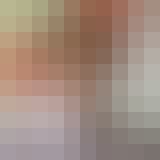Graphic Design is all around us! Words and pictures—the building blocks of graphic design—are the elements that carry the majority of the content in both the digital world and the printed world. As graphic design becomes more visible and prevalent in our lives, graphic design as a practice becomes more important in our culture. Through visual examples, this course will teach you the fundamental principles of graphic design: imagemaking, typography, composition, working with color and shape... foundational skills that are common in all areas of graphic design practice. I don't just want you to watch a video of someone talking about design, I want you to MAKE design! If you want to be a designer you have to be a maker and a communicator, so this course will offer you lots of opportunities to get your hands dirty with exercises and with more practical projects. At the end of this course you will have learned how to explore and investigate visual representation through a range of image-making techniques; understand basic principles of working with shape, color and pattern; been exposed to the language and skills of typography; and understand and have applied the principles of composition and visual contrast. If you complete the course, along with its optional (but highly recommended) briefs, you will have a core set of graphic design skills that you can apply to your own projects, or to more deeply investigate a specialized area of graphic design. To succeed in this course you will need access to a computer. You can complete this course without one but it will be tougher. Access to, and a beginner's level knowledge of Adobe Creative Suite programs, such as Illustrator, Photoshop and InDesign will help you, especially if you want to complete the optional briefs.
Image Contrasts

Skills You'll Learn
Creativity, Graphics, Design Theory, Color Theory
Reviews
4.8 (17,113 ratings)
- 5 stars82.05%
- 4 stars14.54%
- 3 stars2.16%
- 2 stars0.46%
- 1 star0.77%
CS
May 9, 2018
An ok course for beginners. A bit too basic for someone who has already had experience in design, but is great anyway cause it breaks things back down to the simplest parts to help you remember roots.
MN
May 18, 2022
very good introductory course. i enjoyed the assignments, they are not overwhelming, easy to start, and the optional ones offer great opportunity to dig little deeper into graphic design fundamentals.
From the lesson
Week 4: Fundamentals of Composition
This week we are going to look at how designers work with visual contrasts, cropping, hierarchy and direction in single images and complex compositions. You'll find out how to control and use scale, weight, direction, texture, and space in a composition, and how to compose work that ranges from the complex to the minimal. In the first peer review assignment you'll create your own abstract compositions that demonstrate your knowledge and control of visual contrast. In the final optional assignment, you can use all your skills from the entire course to create experimental compositions in the form of a poster for a mythical band. This last project is optional, but I strongly suggest you try it out, it'll let you grow and apply your design knowledge and really enjoy and express yourself in your design work!
Taught By

Michael Worthington
Faculty, Program in Graphic Design
